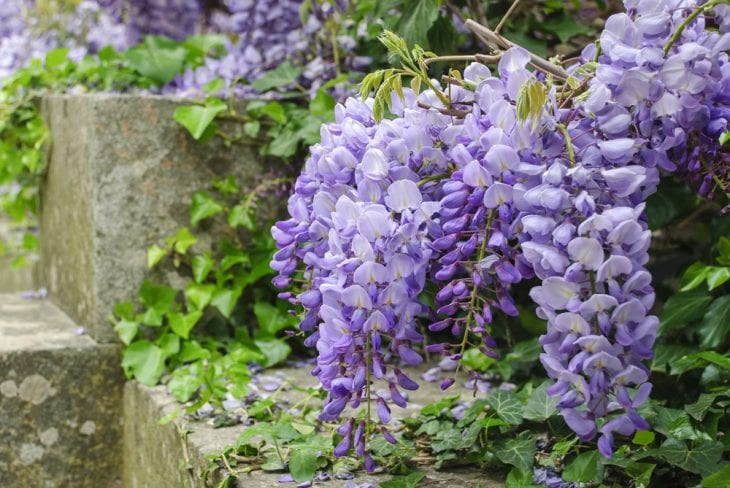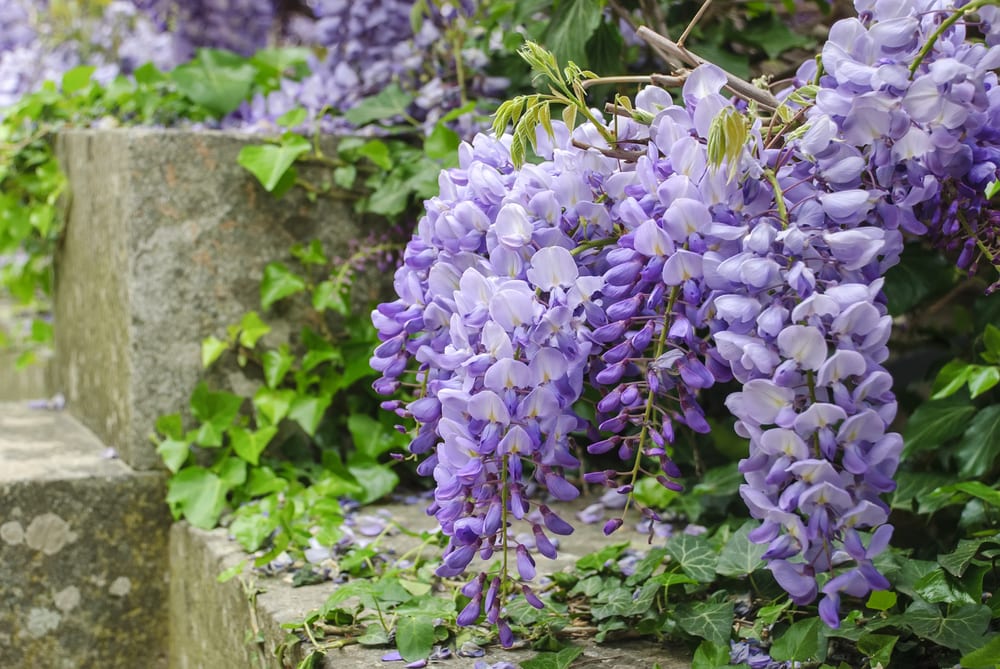Nature : IncredableNature : Its all about Nature (Natural Things,Its Real Facts,Love,Energy,Spirituality).
Everything about Nature Which exists in this whole Universe.
:_
The best places to obtain dried flowers or their essential oils is a herbal health store. Be careful when preparing tonics and other mixtures since some flowers can be very potent. Pregnant or nursing mothers in particular should consult with their doctor before using any essential oils. To learn more about using medicinal flowers for home remedies, have a look at some of the most effective ones below.
Angelica Herb – Remember the green bits of candied angelica used to decorate cakes? It comes from the very same plant as the Angelica flower. Like the rest of the plant, the flower is extremely fragrant and has a number of medicinal uses including digestive disorders and coughs and colds. It can also be given as a strengthening tonic for seniors and children.
Begonia – Begonias can be prepared in several different ways. An infusion made by soaking the flowers in hot water helps to eliminate headaches and rid the body of toxins. The crushed flowers and leaves can also be rubbed directly on the skin to help relieve pain and heal sores or burns.
Bellis Perennis – Also known as the common daisy, this flower holds a wealth of medicinal properties despite its unassuming appearance. When used in an infusion, it acts as a laxative as well as an expectorant to purge the body of toxic matter. It is also used as a home remedy to help treat physical disorders such as arthritis and rheumatism. Direct application to the skin through an ointment or poultice aids in healing wounds.
Black Cohosh – Women should be very careful when using Black Cohosh as it is an extremely potent flower. Black Cohosh can be used as an emmenagogue, which means that it stimulates the uterus. Women with menstrual problems can effectively use low doses of this flower to help regulate their cycles and relieve pain. In the same vein, pregnant women should avoid it since it can bring on a miscarriage or early labor.
Blood Root – This little white flower is very effective in low doses when treating respiratory problems. It can be made into a paste when mixed with other compounds and applied on the skin to treat rashes, warts and various dermic problems. When ingested as a tea or tonic, bloodroot is very effective in cleansing the blood and lowering fevers.
Blue Lobelia – Native Indians used Blue Lobelia as a treatment for syphilis as well as less severe ailments. Tea made with this flower helps to relieve fevers, coughs and colds, and digestive problems.
Butterfly Weed – Also used in Native Indian cuisine, Butterfly Weed is primarily effective in treating respiratory and related lung issues. When ingested in large amounts, it can be used for internal cleansing and pain relief. Direct application to the skin in the form of a poultice can help to reduce swelling or heal wounds.
Calendula – The bright yellow petals of calendula flowers are most effective when mixed with other substances to create ointments or creams. It can then be used on the skin to heal burns, cuts, and wounds.
California Poppy – Don’t worry when using California Poppies since they are not addictive and do not have any opium in the plant. However, it can be used to help reduce anxiety and insomnia, as well as bladder problems in children and adults. California Poppies can be used along with other natural sources over a longer period of time to help with depression and fatigue.
Carnation – When separated from the base of the flower (which is bitter), Carnation petals can be brewed to make an excellent tea to reduce anxiety, agitation, stress and fatigue. Moreover, it also has a healing effect on the skin and can bring down swelling.
Chrysanthemum – Chyrsanthemums are another flower that make a great tea when steeped in hot water. Drinking this tea brings marked relief for those suffering from a fever, headache or common cold. The cooled liquid can also be applied as a compress to soothe tired eyes.
Corn Flower – These distinctive sky-blue flowers have long been used to deliver relief to medical patients. Corn Flower tea acts as a laxative and also as a mouth cleanser. It is safe to consume the flowers in their raw state. A paste made from corn flowers brings relief to acne and tired or irritated eyes.
Dandelion – Dandelions are very effective for cleaning the blood and also helping with related issues, such as anemia. In Native American culture, it was also used as a laxative and a tonic of overall wellbeing.
Foxglove – Used in moderation, foxgloves have proved to be valuable in curing edema (previously known as dropsy). It is also used as a tea to remedy coughs and colds or as a compress for skin swellings or sores.
Gardenia – Gardenias feature heavily in Chinese medicine for blood cleansing and disorders, bladder problems, and physical injuries. It also works on a mental level in helping to alleviate depression, stress, anxiety, insomnia and similar disorders.
Jasmine – Sweet, exotic jasmine flowers do not only make delicious cup of tea, but they also aid in digestive issues, stomach ulcers and ulcers. Sipping this brew before bedtime can help to ward off insomnia and anxiety.
Honeysuckle – Honeysuckle flowers are safe to eat raw and can be used to create an antibacterial gargle wash for sore throats. Skin rashes or inflammation are also effectively treated by applying a paste made from the flowers.
Hyssop– Hyssop has been used as far back as Biblical times and is renowned for its potency against sore throats, bronchitis, congested chests, rheumatism and arthritis. It can also be used to improve circulation of the blood.
Lilac – Lilacs can be steeped to make a tonic that reduces fever and to get rid of internal parasites. Skin burns or wounds are soothed and heal well when a paste or gel made from lilacs is applied.
Lotus – Lotus flowers are popular in both Eastern and Western cultures for their effectiveness against fever, diarrhea and also more serious illnesses such as cholera and bronchitis. A syrup made from the flower provides much relief for bad coughs.
May Apple – May Apples are extremely potent (even toxic) and should be used very carefully, preferably with the supervision of a professional herbalist. A small amount can be brewed as a tea or tonic to make a powerful laxative and can also bring on vomiting.
Morning Glory (PDF) – Use caution not to ingest Morning Glory seeds as it could cause strong hallucinatory effects. The flower is used in several cultures as a laxative and general purge. Morning Glory also acts as an emmenagogue to bring on menstruation or labor.
Nasturtium – The anti-microbial properties of Nasturtium makes it an effective remedy against colds and flu. It is also useful in treating infections of the lungs, bladder and reproductive organs.
Passionflower – Passionflower contains medical properties best suited for treating disorders such as insomnia, agitation, anxiety, and epilepsy. It also acts on the nerves to reduce pain and induce a calming sensation.
Peony – Medicinal use of Peonies dates back to the ancient Chinese civilization. Consuming a tonic made from the flower is helpful as a muscle relaxant in cases such as general muscular pain and cramps and also menstrual discomfort.
Plum Flowers – Plum flowers are primarily used in Chinese medicine to free the body from parasites and ulcers. They are also used to boost digestive health.
Rose (PDF) – Roses contain a good deal of Vitamin C and are very safe for human consumption. The petals can be eaten raw to increase blood circulation, and they also relieve depression. Rose tea acts as a mild laxative. A paste or cream made from the petals does wonders to improve the condition of the skin, especially on the face.
Rosy Periwinkle – Rosy periwinkle has traditionally been given as a tea for diabetes and high blood pressure. It has also made the news in recent years for its beneficial properties towards diseases that include leukemia, cancer and Hodgkin’s Disease.
Snapdragon (PDF) – Snapdragon can be used as a gentle sedative and mental relaxant. It is especially useful when battling insomnia or stress.
Sunflower – Consuming a brew made from sunflowers helps greatly with ulcers and menstrual cramps. It can also be used as a wash for gargling in cases of sore throats.
FaceBook
:_
Medicinal Flowers and Their Uses:_
For several centuries, medical practitioners have long acknowledged the therapeutic properties of certain flowers. More than just spanning time, this knowledge also spans many cultures around the world. One of the greatest advantages is that flowers and plants offer completely natural medicinal properties, often without the scary side effects that modern pills and medications bring on. Furthermore, remedies made from flowers can be much cheaper than drugs marketed by pharmaceutical companies.
The best places to obtain dried flowers or their essential oils is a herbal health store. Be careful when preparing tonics and other mixtures since some flowers can be very potent. Pregnant or nursing mothers in particular should consult with their doctor before using any essential oils. To learn more about using medicinal flowers for home remedies, have a look at some of the most effective ones below.
Angelica Herb – Remember the green bits of candied angelica used to decorate cakes? It comes from the very same plant as the Angelica flower. Like the rest of the plant, the flower is extremely fragrant and has a number of medicinal uses including digestive disorders and coughs and colds. It can also be given as a strengthening tonic for seniors and children.
Begonia – Begonias can be prepared in several different ways. An infusion made by soaking the flowers in hot water helps to eliminate headaches and rid the body of toxins. The crushed flowers and leaves can also be rubbed directly on the skin to help relieve pain and heal sores or burns.
Bellis Perennis – Also known as the common daisy, this flower holds a wealth of medicinal properties despite its unassuming appearance. When used in an infusion, it acts as a laxative as well as an expectorant to purge the body of toxic matter. It is also used as a home remedy to help treat physical disorders such as arthritis and rheumatism. Direct application to the skin through an ointment or poultice aids in healing wounds.
Black Cohosh – Women should be very careful when using Black Cohosh as it is an extremely potent flower. Black Cohosh can be used as an emmenagogue, which means that it stimulates the uterus. Women with menstrual problems can effectively use low doses of this flower to help regulate their cycles and relieve pain. In the same vein, pregnant women should avoid it since it can bring on a miscarriage or early labor.
Blood Root – This little white flower is very effective in low doses when treating respiratory problems. It can be made into a paste when mixed with other compounds and applied on the skin to treat rashes, warts and various dermic problems. When ingested as a tea or tonic, bloodroot is very effective in cleansing the blood and lowering fevers.
Blue Lobelia – Native Indians used Blue Lobelia as a treatment for syphilis as well as less severe ailments. Tea made with this flower helps to relieve fevers, coughs and colds, and digestive problems.
Butterfly Weed – Also used in Native Indian cuisine, Butterfly Weed is primarily effective in treating respiratory and related lung issues. When ingested in large amounts, it can be used for internal cleansing and pain relief. Direct application to the skin in the form of a poultice can help to reduce swelling or heal wounds.
Calendula – The bright yellow petals of calendula flowers are most effective when mixed with other substances to create ointments or creams. It can then be used on the skin to heal burns, cuts, and wounds.
California Poppy – Don’t worry when using California Poppies since they are not addictive and do not have any opium in the plant. However, it can be used to help reduce anxiety and insomnia, as well as bladder problems in children and adults. California Poppies can be used along with other natural sources over a longer period of time to help with depression and fatigue.
Carnation – When separated from the base of the flower (which is bitter), Carnation petals can be brewed to make an excellent tea to reduce anxiety, agitation, stress and fatigue. Moreover, it also has a healing effect on the skin and can bring down swelling.
Chrysanthemum – Chyrsanthemums are another flower that make a great tea when steeped in hot water. Drinking this tea brings marked relief for those suffering from a fever, headache or common cold. The cooled liquid can also be applied as a compress to soothe tired eyes.
Corn Flower – These distinctive sky-blue flowers have long been used to deliver relief to medical patients. Corn Flower tea acts as a laxative and also as a mouth cleanser. It is safe to consume the flowers in their raw state. A paste made from corn flowers brings relief to acne and tired or irritated eyes.
Dandelion – Dandelions are very effective for cleaning the blood and also helping with related issues, such as anemia. In Native American culture, it was also used as a laxative and a tonic of overall wellbeing.
Foxglove – Used in moderation, foxgloves have proved to be valuable in curing edema (previously known as dropsy). It is also used as a tea to remedy coughs and colds or as a compress for skin swellings or sores.
Gardenia – Gardenias feature heavily in Chinese medicine for blood cleansing and disorders, bladder problems, and physical injuries. It also works on a mental level in helping to alleviate depression, stress, anxiety, insomnia and similar disorders.
Jasmine – Sweet, exotic jasmine flowers do not only make delicious cup of tea, but they also aid in digestive issues, stomach ulcers and ulcers. Sipping this brew before bedtime can help to ward off insomnia and anxiety.
Honeysuckle – Honeysuckle flowers are safe to eat raw and can be used to create an antibacterial gargle wash for sore throats. Skin rashes or inflammation are also effectively treated by applying a paste made from the flowers.
Hyssop– Hyssop has been used as far back as Biblical times and is renowned for its potency against sore throats, bronchitis, congested chests, rheumatism and arthritis. It can also be used to improve circulation of the blood.
Lilac – Lilacs can be steeped to make a tonic that reduces fever and to get rid of internal parasites. Skin burns or wounds are soothed and heal well when a paste or gel made from lilacs is applied.
Lotus – Lotus flowers are popular in both Eastern and Western cultures for their effectiveness against fever, diarrhea and also more serious illnesses such as cholera and bronchitis. A syrup made from the flower provides much relief for bad coughs.
May Apple – May Apples are extremely potent (even toxic) and should be used very carefully, preferably with the supervision of a professional herbalist. A small amount can be brewed as a tea or tonic to make a powerful laxative and can also bring on vomiting.
Morning Glory (PDF) – Use caution not to ingest Morning Glory seeds as it could cause strong hallucinatory effects. The flower is used in several cultures as a laxative and general purge. Morning Glory also acts as an emmenagogue to bring on menstruation or labor.
Nasturtium – The anti-microbial properties of Nasturtium makes it an effective remedy against colds and flu. It is also useful in treating infections of the lungs, bladder and reproductive organs.
Passionflower – Passionflower contains medical properties best suited for treating disorders such as insomnia, agitation, anxiety, and epilepsy. It also acts on the nerves to reduce pain and induce a calming sensation.
Peony – Medicinal use of Peonies dates back to the ancient Chinese civilization. Consuming a tonic made from the flower is helpful as a muscle relaxant in cases such as general muscular pain and cramps and also menstrual discomfort.
Plum Flowers – Plum flowers are primarily used in Chinese medicine to free the body from parasites and ulcers. They are also used to boost digestive health.
Rose (PDF) – Roses contain a good deal of Vitamin C and are very safe for human consumption. The petals can be eaten raw to increase blood circulation, and they also relieve depression. Rose tea acts as a mild laxative. A paste or cream made from the petals does wonders to improve the condition of the skin, especially on the face.
Rosy Periwinkle – Rosy periwinkle has traditionally been given as a tea for diabetes and high blood pressure. It has also made the news in recent years for its beneficial properties towards diseases that include leukemia, cancer and Hodgkin’s Disease.
Snapdragon (PDF) – Snapdragon can be used as a gentle sedative and mental relaxant. It is especially useful when battling insomnia or stress.
Sunflower – Consuming a brew made from sunflowers helps greatly with ulcers and menstrual cramps. It can also be used as a wash for gargling in cases of sore throats.






 Measuring the glucose level in blood
Measuring the glucose level in blood Symptoms of diabetes - by Mikael Häggström
Symptoms of diabetes - by Mikael Häggström


 These
are stunning looking purple blossoms that originate from Japan, some
parts of USA as well as China but today found all around the world. The
Wisteria is a creeping vine and the plant can be quite large with a
thick trunk and vine branches that can extend as far as 60 ft. While the
blossoms on it look fairly lovely, it is thought that entire plant is
rather harmful; eating any part of the shrub can create the following:
These
are stunning looking purple blossoms that originate from Japan, some
parts of USA as well as China but today found all around the world. The
Wisteria is a creeping vine and the plant can be quite large with a
thick trunk and vine branches that can extend as far as 60 ft. While the
blossoms on it look fairly lovely, it is thought that entire plant is
rather harmful; eating any part of the shrub can create the following:













